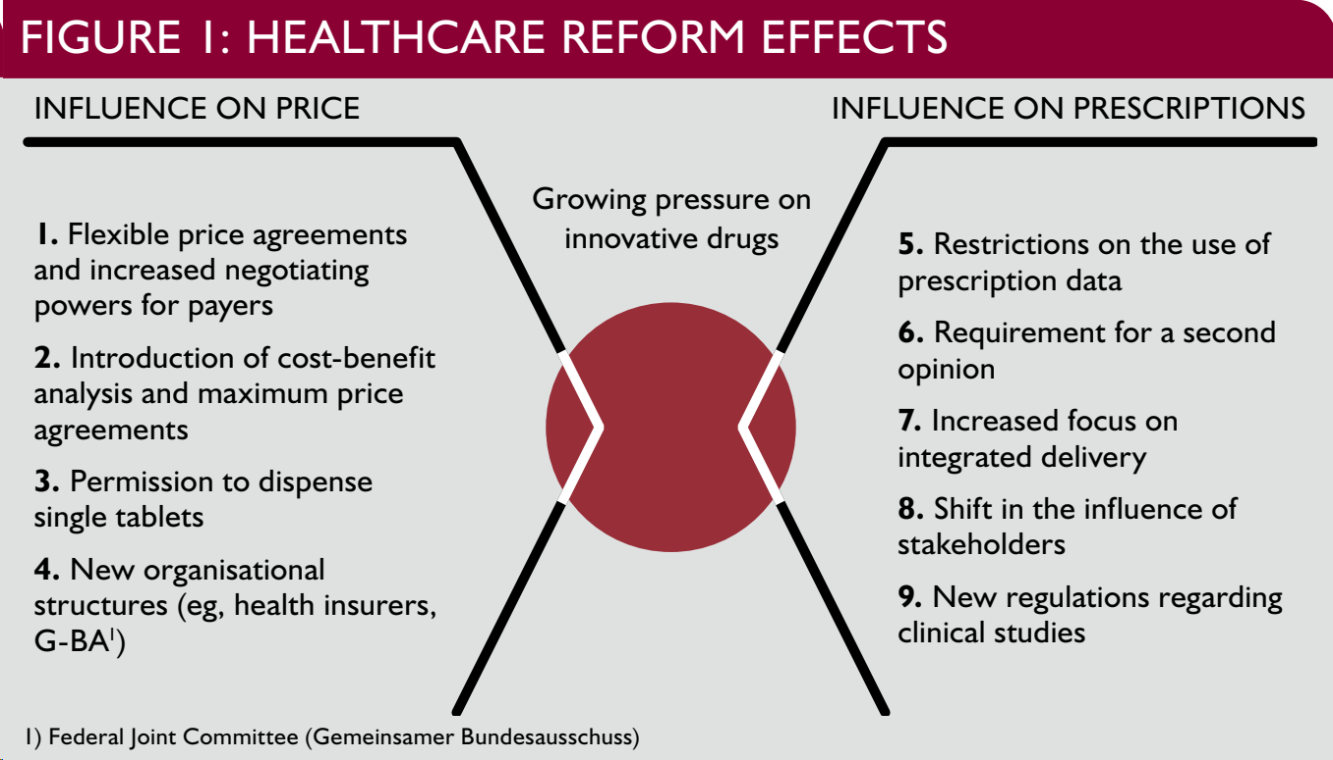Levers from healthcare reforms are located throughout the decision making process to determine whether a drug reaches the patient – beginning with drug approval and ending with patient compliance. Previous reforms focused on the levers towards the end of this process (e.g., applying pressure on physicians to prescribe generic drugs). Unsurprisingly, the new reforms seek to pull the levers with the greatest impact on drug expenditure.
However, the current reforms introduce elements throughout the entire process, targeting both fast-growing markets and larger, more established therapy areas. Those elements of the reform that will have the greatest impact on the drug industry are shown in the figure below; most of these can be categorised by their influence either on price or on prescribing behaviour.
New customer groups are emerging and gaining influence, such as second opinion physicians who review prescriptions for expensive drugs. To accommodate this shift in the importance of stakeholders, cross-functional processes for product management, market access, medical affairs and key account management will be necessary. If they have not already done so, drug firms will need to build up internal expertise in market access and health economics, and then integrate these skills into their business strategies.

